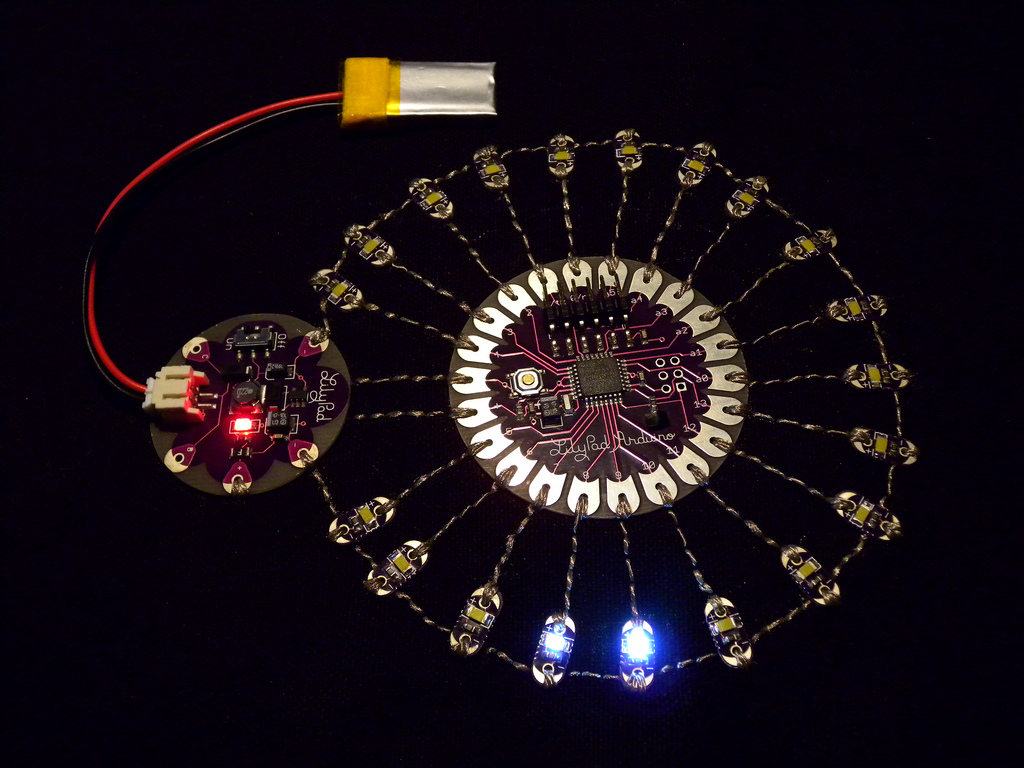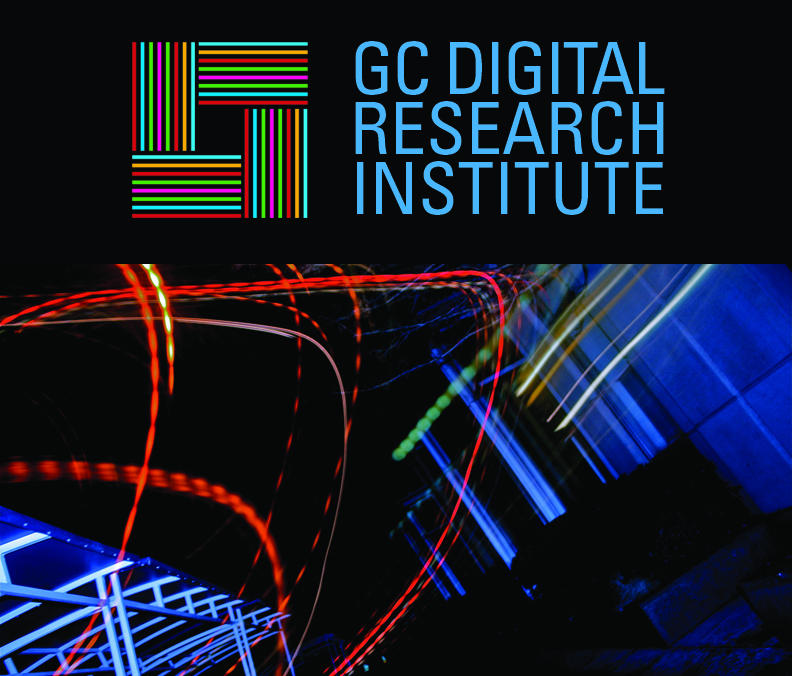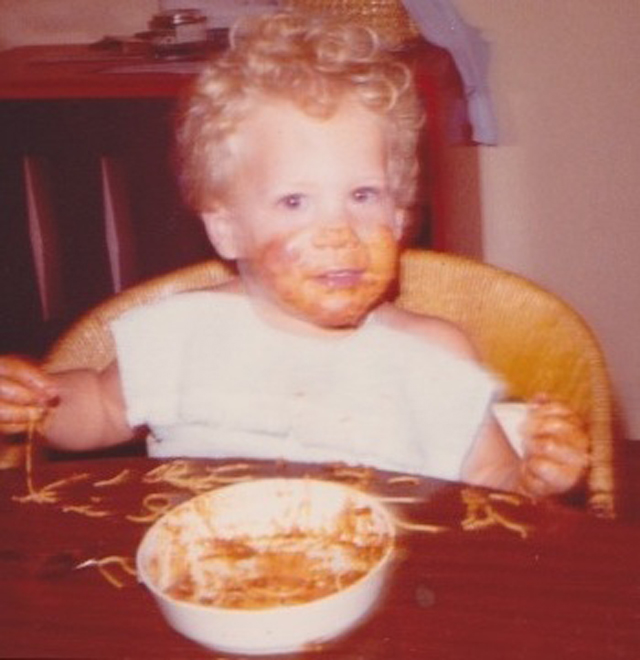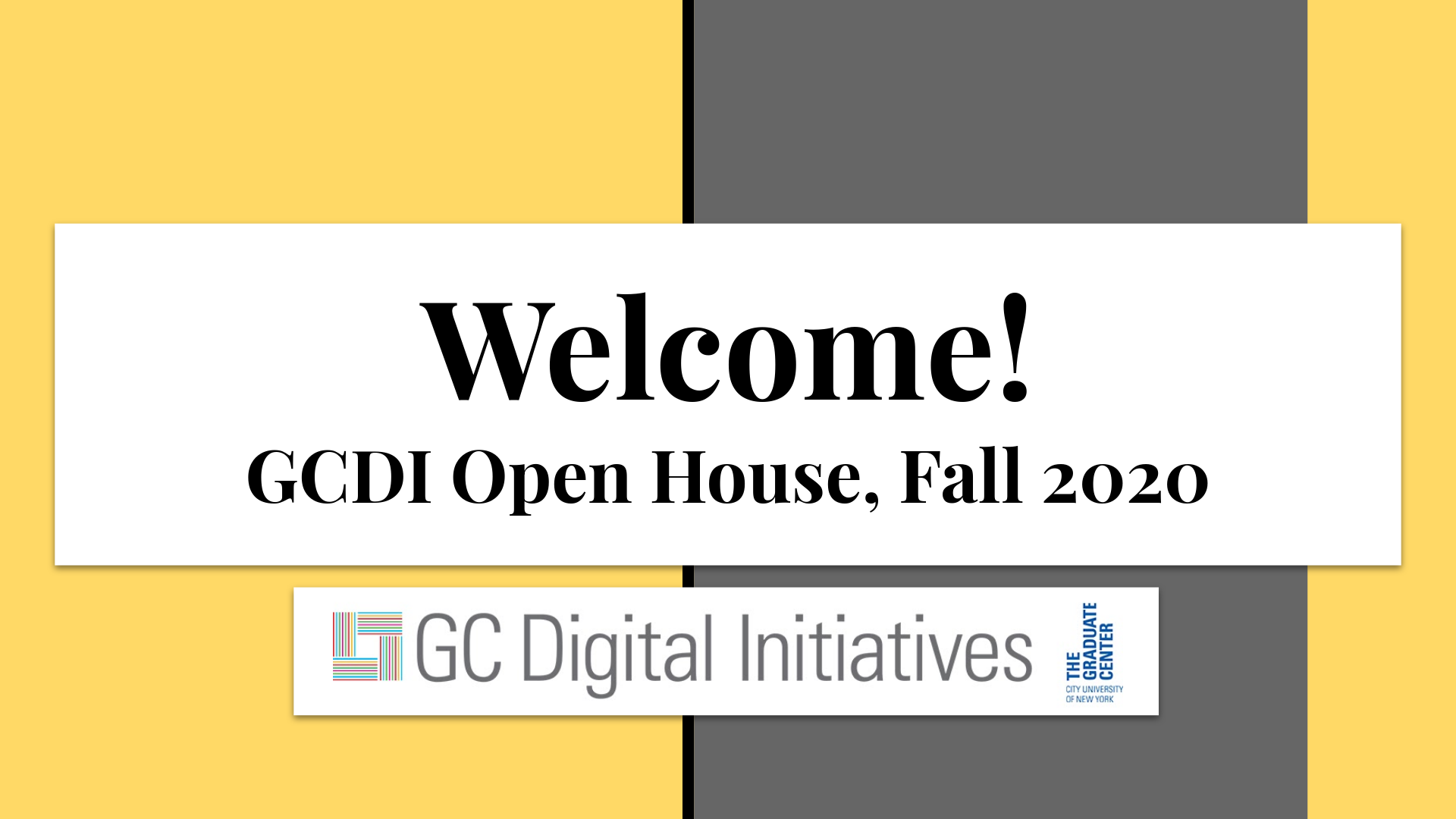
Our last maker-themed blog post explored how maker spaces and maker culture are increasingly common features of digital centers, libraries, and academic settings. Common, perhaps, but still, perhaps mystifying to those of us who are more comfortable writing essays than wiring circuits?
As a GC Digital Fellow who has been able to help build out the GC Maker Space, I see the development of maker spaces as a crucial vote for creative, experienced-based, and also critical work in graduate research. I think of extant communities and projects that already do this so well at The Graduate Center, CUNY, like 3Text–a student-run group that meets to create textual and bookish crafts in the spirit of the late Eve Kosofsky Sedgwick, who was an invaluable leader in queer theory, pedagogy, and beyond. Harmonizing conceptually with these crafting and creative spaces, maker spaces readily integrate digital and analog modes of knowledge–such as sewing cloth for wearables, or using clay to sculpt a 3D model for scanning. In this sense, maker spaces are poised to function as highly interdisciplinary communities that hold space for a wide array of critical outcomes, particularly those gained through creative and communal work.
However, the increased presence of maker spaces and their potentiality does not necessarily make them accessible. As we’ve begun to form the GC Maker Space, we’ve thought primarily of the word access and how a rich understanding of its varied meanings can act as a guide for our work and community. To continue to think through this principle, last semester we invited Dr. Joshua Miele, Associate Director of Technology Research and Development at the Rehabilitation Engineering Research Center on Low Vision and Blindness, to speak on Digital Accessibility and the Making of a Meta Maker Movement. In this talk, Dr. Miele developed a concept of “meta-making,” which builds on the maker sensibility of “hacking” or altering existing technologies to better suit the needs of their users. For Miele (and my summary won’t do his ideas justice), “meta-making” takes advantage of this built-in maker ethos to consider how we might further “hack” not only the technologies themselves, but our conceptions of their uses and their users. Miele emphasized the importance of access at “first principles,” in which accessibility is fundamentally considered in the development of the physical space, resources, and community itself. By exploring his own work in the Blind Arduino Project and sharing his experiences in accessible design and fabrication, Dr. Miele reminded us (with wit, humor, and warmth) how essential accessibility as a multifaceted term should be as we grow and “meta-make.”
In a complementary sense, we might also consider access in maker spaces as a question of scaffolding not only the experience of learning new technologies, but also their critical payoff. To speak to our precise community at the GC Maker Space: as a student at The Graduate Center, CUNY, I often reflect on the unusual institutional structure of 365 Fifth Avenue. This building houses a vast number of academic programs and disciplines, as well as faculty and staff, which are all geared towards facilitating graduate research. From the cafeteria crew that makes sure there’s a simple way to get a snack, to the Interlibrary Loan team who finds our research materials, to the staff who makes sure we’re in the administrative system, develops programming and events to enrich our thinking, and connects and maintains the audio/visual technology for us to teach and be taught–all professional positions are, in a way designed, to facilitate the development and production of this work. To be sure, the jobs and work we perform at The Graduate Center do not necessarily define us, and this energy can be a great source of community. However, this intense directionality can also cause us to miss hidden possibilities.
When the ultimate goal is research, across the vast array of academic programs, it can be difficult to make room for other things, even basic ones. Specific to the topic at hand, although it might not be the gravest priority in creating a balanced academic life–it really can be a steep learning curve to know how maker technologies, which value experimentation, play, and interdisciplinary learning, can fit into our busy schedule of teaching, writing, working, thinking, being. In order to provide a truly accessible maker space to The Graduate Center community, in addition to Dr. Miele’s access at first principles and “meta-making” structures, I feel that the space must clearly scaffold what it can offer students, faculty, and staff, and provide a welcoming space for them to engage a type of inquiry that is likely outside their field research, area of expertise, or knowledge base.
I hope you’ll think of ways to do this with me and the GC Digital Fellows by attending the Monday Maker Hours, getting in touch, and coming to workshops! But in the meantime, I wanted to share one of the technologies that I think crystallizes these principles of accessibility that we’re trying to fully understand and engage with at the GC Maker Space.
The Arduino is an open-source programmable circuit board (or microcontroller) as well as open-source software that allows you to write code and upload it to the board. Because Arduino is both open-source (which means anyone can build an Arduino board and even sell it according to their Creative Commons license, or alter the code for the software), it has a robust community of users that are invested in making Arduino the best it can be through software updates and robust documentation. Arduino is relatively inexpensive, has widely-available tutorials, and requires very little equipment to get started, which makes it an ideal entry point for those of us beginning to experiment with maker projects. Also, Arduino can be “meta-made” for accessible design and education, which Joshua Miele has explored in the Blind Arduino Project (mentioned above).
I feel that Arduino can, in many ways, allow us to develop the multifaceted type of accessibility that we should create around maker spaces, so I’ve created a tutorial based on Arduino workshops I’ve taught at The Graduate Center, CUNY, that is designed for solo or small group work during our Monday Maker Hours. If you’d like to check out the GC Maker Space, but you’re not quite sure what to do or where to get started, this tutorial will take about half an hour to complete the first activity, or about an hour and a half to complete the tutorial in its entirety.
Our Arduino equipment is perhaps my favorite thing in the GC Maker Space. I think it’s a great system for practicing coding more generally: by requiring a back-and-forth with the circuit board and software, Arduino vivifies that code always does something. And, like N. Katherine Hayles importantly critiques, Arduino’s hands-on circuiting shows us that information always has an embodied, material component. In my academic work on book history, materiality, and new media, I’ve found that Arduino-based projects give me space to think through concepts of information, digitality, and materiality, and test them in an experiential way. Of course, everyone will use Arduino differently–but that, perhaps, is the best goal of all.
I hope you’ll join me at Monday Maker Hours in the upcoming weeks, and be sure to be in touch with the GC Maker Space as we continue to develop and grow!
Link to Arduino Tutorial: https://github.com/mckinniburgh/ArduinoTutorial





